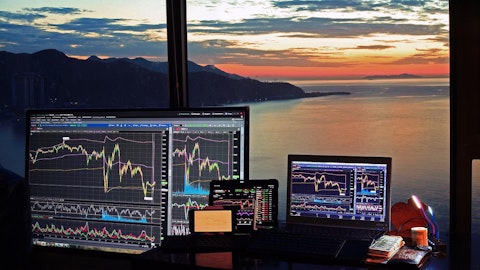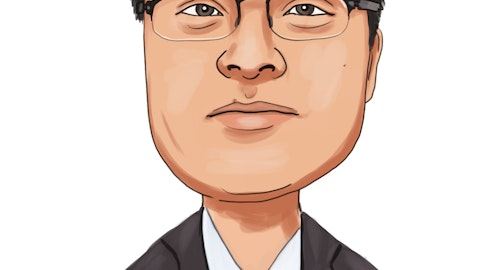Tamara Lundgren: Well, what is really driving the continued tight supply of scrap are a couple of things, lower manufacturing activity, lower construction and demolition activity and just the slowing economy generally. Combined are just higher collection cost for scrap as inflation pressures have hit suppliers and interest rates are obviously higher than they’ve been in the past. So we are projecting a continuation of these tighter supply conditions until we start to see some changes in the economy and the things that we’re looking for is increased PMI, i.e. increased manufacturing activity, resolution of the UAW strike, which will — should resolve both ferrous and — or should help to improve both ferrous and nonferrous supply flows.
Clearly stabilization in ferrous prices and nonferrous prices for that matter, I think will help supply flows as well and obviously help margin compression. And then lastly in 2024, we are expecting to see a higher flow a higher pace of funds coming through from the US infrastructure bill.
Samuel McKinney: Okay. Thank you, Tamara. It’s very helpful. And then moving to ferrous, domestic and export volumes sequentially decreased by a pretty similar percentage in the fourth quarter. Given the guidance that Stefano gave for the first quarter of 2024, any sort of divergence expected between domestic and export volumes in the first quarter?
Stefano Gaggini: This is Stefano. Yeah. Just from an outlook perspective at this point, we don’t expect that divergence to be a factor as we look at our Q1 outlook. Obviously, Tamara mentioned the UAW strike that could be a factor that could be helpful on the domestic side. But at this point there is still uncertainty regarding that.
Samuel McKinney: Understood. And then lastly for me on the nonferrous side, Tamara touched on it during the call that you all did a solid job during this quarter on the nonferrous volume side. Moving into next year, can you talk through some of the various pricing headwinds that you might face in that space? I know there’s a lot of moving parts there, and what can be done to perhaps mitigate some of those impacts including the cost reduction initiative you announced today?
Tamara Lundgren: Sure. Let me start at a high level and then Stefano why don’t you add some specifics. At a high level, it’s the same dynamics that we’re speaking about before, which is manufacturing activity, as well as the UAW strike has really impacted nonferrous production as well. So we see some — we expect that that will resolve over time. And so both flows and prices should stabilize and get back on that positive trend of meeting this higher demand due to the transition to low-carbon technologies whether it’s electric vehicles or solar or wind, for example, all of these low carbon technologies require more metals and particularly more non-ferrous metals than the technologies that they’re replacing. So, we’re really looking for those economic trends to come through and those funds from the U.S. infrastructure bills to start to flow in 2024. Stefano?
Stefano Gaggini : Yes. And then, Sam, from what we can control, obviously, we have talked about being excited about having made progress on our deployment of the advanced non-ferrous recovery technologies. That’s how we want to gain benefit from non-ferrous side recovery from trading operations until we provided that and we should see the run rate of those increases as we go into FY 2024 as per our comments. And then with respect to your questions on productivity initiatives. So, today, we announced in this incremental initiative program targeting benefits of $30 million on an annual basis. We have a process to track this initiative based on KPIs and other data points to support the achievement and we are confident we will be able to gain benefit from that.
We have already started implementing these measures in our first quarter and we expect to realize an initial benefit from them in the quarter in the range of probably half of the quarterly run rate implied in the $30 million annual number.




